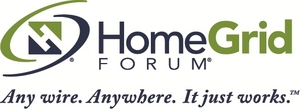BEAVERTON, OR — (Marketwired) — 07/02/15 —
More 4K TV–s with OTT (Over the Top) services such as Netflix and YouTube add to the bandwidth congestion which will require reliable ways to deliver OTT HD traffic
More users are choosing to opt out of traditional TV all together and going all “IP”
Reliable in-home networking is essential to the successful delivery of OTT services
Technology providers should work together to provide seamless hybrid systems (wired and wireless extenders) that deliver what consumers want from their home networks
The burgeoning interest in on-demand streaming video, driven by new OTT service offerings such as Netflix and Amazon Prime Instant Video, together with the rapid proliferation of Internet-enabled devices, is one of the major market trends of the moment. This, however, puts an enormous strain on in-home networks which can struggle to cope with the growing demands on bandwidth and reliable speeds throughout the home, according to HomeGrid Forum President, Donna Yasay.
Speaking today at the Broadband TV event in Anaheim, California, Donna Yasay highlighted how these trends are adding to bandwidth congestion and the need to find reliable ways to deliver these vast amounts of traffic. “More and more people are choosing to opt out of traditional broadcast TV in favor of all-IP services,” says Yasay, “and they generally no longer have just one entertainment point or internet outlet in the home — it–s more likely to be one in every room.”
OTT streaming services are predicted to reach over 330 million subscribers globally by 2019, according to a recent Juniper Research study, published in May of this year. “That–s more than the entire population of the United States, men women and children included!” points out Donna Yasay.
A UK YouGov survey conducted last year reveals that the UK home already has an average of 7.4 internet-enabled devices. The demand is driven by the availability of new devices that provide streaming video, such as Connected TVs and streaming media devices, game consoles and set-top boxes, and a plethora of other new gadgets on the market, from wearable technologies to smart devices in the home. Yasay says that this number is likely to continue increasing rapidly as more and more homes install smart meters, security systems, CCTV monitoring and many other smart systems.
“So what is the downside?” asks Donna Yasay. The answer is, of course: “None, providing your in-home network is up to the task of handling so much bandwidth and dispersing content to all four corners of your home. And of course, if you live in a dense residential environment, such as an apartment block, you need to know that the network can handle the close proximity of other networks, something wireless often struggles with.”
Yasay argues that the quality of experience these services require and the bandwidth block that can arise with so much going on in one small space, can only be handled in multi-room, multi-device homes and multi-dwelling units (MDUs) by mixing and matching the wireless and wireline networking to fit individual consumer–s or family–s needs. “What makes most sense is to take the best of all the networking technologies and combine them,” says Yasay. “Wireline technologies of any description, running at Gigabit speeds around the home with G.hn make a robust, reliable backbone, connecting static devices such as TVs, smart meters, desktops, whilst access to the Internet from individual mobile devices can “piggyback” with WiFi onto the network.”
More and more vendors are now offering G.hn-enabled devices, from powerline, phoneline and coax adapters and plastic optical fiber connectors to Smart TVs with G.hn chips embedded. The key feature of G.hn is that it is a gigabit networking technology and that it works over any existing wireline medium in the home by simple plug and play. It can send high speed digital content over any wire and work seamlessly with the wireless networking technologies in the home to build a hybrid system for seamless in-home communications. HomeGrid Forum has placed great emphasis on ensuring the interoperability of devices and has a strong certification program for both silicon and systems. The Forum recently announced the first tranche of certified G.hn products and has successfully demonstrated multi-room, multicast environments at both CES Las Vegas and Computex Taiwan.
“We are excited at what the future holds in terms of the Smart Home, the Internet of Things and home entertainment,” says Yasay. “We believe that open standards technologies available over any medium make the home network much more reliable and simpler to install and connect. That–s where G.hn comes in!”
HomeGrid Forum (HGF) is an industry alliance that brings together the world–s best in technology innovators, silicon vendors, system manufacturers and service providers to promote G.hn, a globally recognized gigabit home networking technology based on ITU-T standards. Over 70 members promote the global adoption of G.hn, a single unified, multi-sourced networking technology — over coax, copper pairs, powerline, and plastic optical fiber — while continuing to support HomePNA deployments and their transition to G.hn. HomeGrid Forum provides G.hn silicon and system certification through a strict compliance and interoperability testing program. For more information on HomeGrid Forum, please visit our website at .
Follow us on @homegrid_forum
For more information please contact
Sheila Lashford
+44 (0) 7986 514240
or
+44 (0) 1636 812152


You must be logged in to post a comment Login